A reverse culture shock
It was a homecoming of sorts as I recently took a two-week voyage to China with my family, journeying across Shanghai (called the “Pearl of the Orient), Qingdao1, Hefei2 and Yinchuan3, in a round trip via planes, trains and automobiles, before returning to Shanghai and its famed, picturesque waterfront promenade known as the Bund.
After spending my early childhood in China before emigrating to Singapore during my adolescent years and to the United Kingdom in the course of my early adulthood, the trip back to the People’s Republic of China was significant and sentimental. This was the first time I returned to China in five years; it was also my first visit since the devastating COVID-19 pandemic, which took away my paternal grandmother. It was also the first time my children visited China, where they met many members of our relatives and family friends.
Unsurprisingly, I experienced a “reverse culture shock”—a common emotional and psychological reaction to returning home after living abroad for a while—due to China’s rapid development, as well as my mixed identity and perception. I may no longer identify myself as a true mainlander, but my Chinese connection, kinship and friendship ties allow me to perceive and observe China as an ”internal outsider” and “external insider”. In a nutshell, the key themes that stood out during my recent trip to China were generally centred on the country’s new post pandemic social norms, technological advancement and changing consumption patterns, all of which we will delve into in this article.
Moving on from COVID-19
Since China’s reopening in late 2022, the Chinese people—from the look of things on the surface— have moved on from the pandemic. Most people in China, including some staff in food and beverage (F&B) outlets and restaurants,
are no longer wearing masks. Public notifications about social distancing and mask-wearing are fading. But interestingly, the hygiene-conscious, who have been promoting the use of serving chopsticks while labelling the use of personal chopsticks for shared dishes as bad habit, are finally getting their voices heard as Chinese society steps up good hygiene practises after COVID-19.
In all the banquets we attended, we used serving chopsticks to pick food for ourselves and one another. That was not the case five years ago, when many Chinese were still using personal chopsticks, instead of shared chopsticks, to get food from the shared dish. In terms of public health, people in China are now more concerned about the Influenza A virus and shingles, both of which are making their seasonal rounds among the general public.
In terms of on-the-ground sentiments, the pandemic may have prompted some among the public to assess how the outbreak was handled from various angles. COVID-19 took its toll on lives and livelihoods; the public experienced constant lockdowns and social restrictions implemented from 2020 to end-2022 followed by a sudden re-opening. Looking ahead, a strong relationship between society and government will be needed in order for productivity and growth to improve.
Technological advancements
In China, the COVID-19 pandemic has accelerated technological development, especially in the area of robotics and facial recognition. The usage of robots in everyday life in China has become the norm. For example, delivery staff would put the items to be delivered into a robot, which does the tail-end delivery within an apartment. When doing its errand, the robot can press the lift using Wi-Fi and ask fellow passengers to give way. Once at the customer’s house unit or room, it will call the recipient via telephone for the pickup (Exhibit 1).
Exhibit 1: China’s home delivery robots
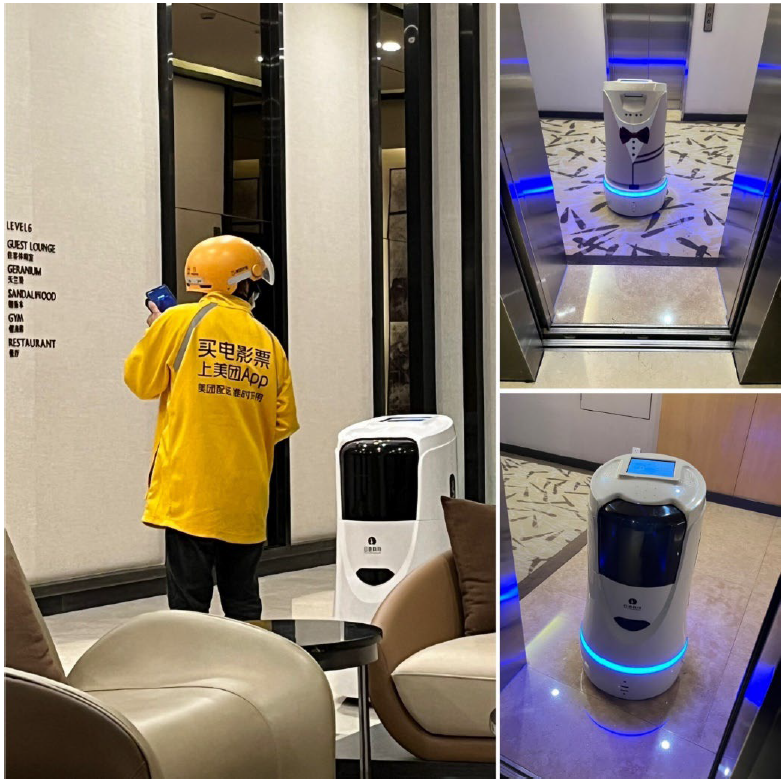
Source: author
There are other intriguing technological innovations in China that are now commercialised thanks to the pandemic. When we were transiting in Hefei (a new tier-1 city), the lifts in the airport had hologram buttons, which enable users to key in their destinated floor number using holographic images. Such hologram buttons prevented lift passengers from touching potentially contaminated surfaces during the pandemic. According to Chinese state media and a Hong Kong-based newspaper, a Hefei hospital similarly uses hologram buttons (see Exhibit 2) for its touchless registration and payment machines, all thanks to the holographic imaging technology developed by Anhui Easpeed Technology, a Chinese high-tech company.
Exhibit 2: An image of a lift with hologram buttons

Source: Shutterstock
Moreover, there are numerous high-tech vending machines across Chinese cities that use facial recognition technology, which allows a purchaser to pay for an item by scanning his or her face. For instance, to buy a drink from these new-generation vending machines (see Exhibit 3), one only needs to stand in front of the interface screen to initiate the facial recognition, which upon a successful transaction will drop the chosen drink into the dispensing outlet. This is done without the need for cash or the use of any payment app on a smartphone.
Exhibit 3: A vending machine that uses facial recognition for payment
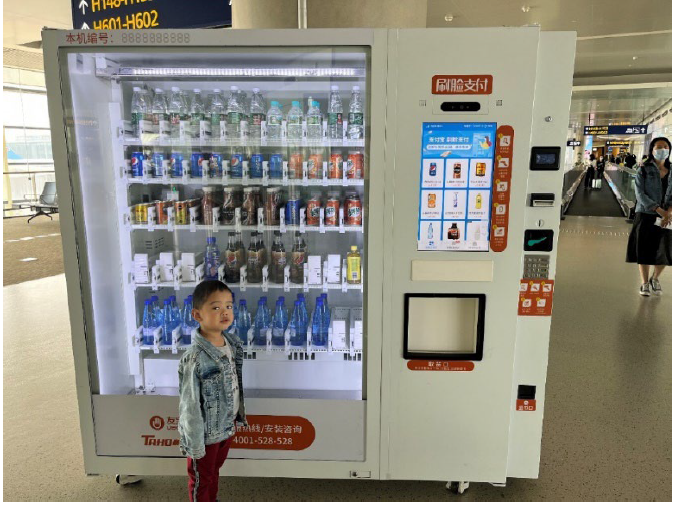
Source: author
Getting around in Chinese cities, we also commuted in a few domestic sport utility vehicles, namely those of Geely and BYD, that use home-grown navigation systems and smart in-car assistants, such as those developed by Chinese tech giant Huawei. The tech company does not manufacture cars but offers smart car solutions, such as battery and electronic control systems and interactive voice control (see Exhibit 4). A key observation is that many tech products, solutions and systems in China are manufactured by home-grown companies. This bodes well for the country’s ambition to be self-reliant in science and technology amid intense technological competition with the US, which has barred US firms—including major chipmakers—from supplying semiconductor chips and artificial intelligence technology to Chinese companies.
Exhibit 4: A showroom featuring smart car solutions
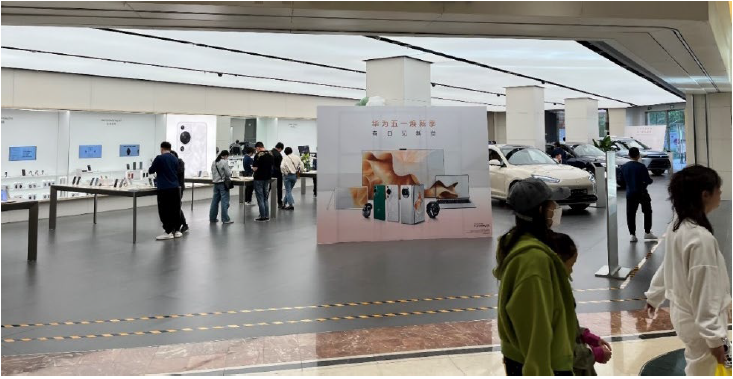
Source: author
Changing consumption patterns
We went to China a week before and during the Labour Day Golden Week, which took place from 29 April to 3 May 2023, and it was no surprise that the streets were filled with people. Queues were very long at tourist attractions (mostly brimming with domestic tourists) and restaurants were unprecedently packed (爆满 or explosively full), according to our local hosts who made the bookings. Post COVID-19, “revenge” or pent-up F&B-related spending in China was alive and well, especially at multigenerational family gatherings and banquets in restaurant private rooms.
Plastic surgeries are also gaining popularity in China. Many people, especially females, under 35 years of age have had aesthetic surgeries, much to my surprise. An estimated 1.05 million people in China underwent plastic surgeries in 2020, according to a recent report by online statistics platform Statista, which is forecasting the annual growth of medical aesthetics market size in China to grow 17.5% on a year-on-year basis in 2023. This trend is giving rise to an increase in the number of specialised plastic surgery hospitals in China; there was one near our accommodation in Xintiandi, Shanghai (see Exhibit 5).
Exhibit 5: Demand for plastic surgery in China is on the rise
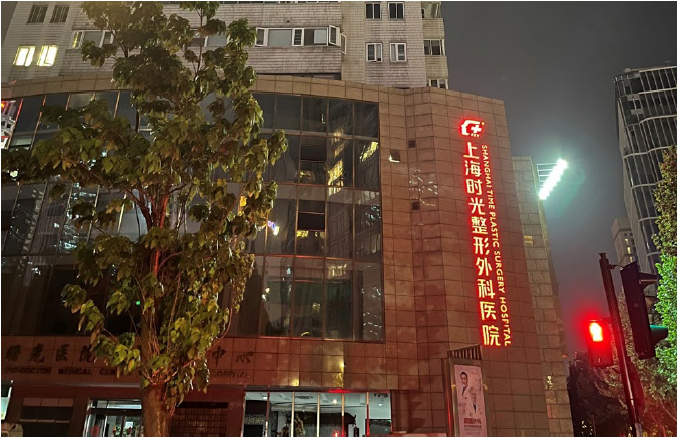
Source: author
Many young Chinese consumers tend to be picky and follow trends. In the age of social media, these consumers do not spend much but want to be “seen”—taking photos of themselves at “Internet-famous” stores (网红店) and posting them on social media platforms—a term known by Chinese social media users as “打卡”.
An example of a “Internet-famous” store is that of Chinese beauty retailer Harmay, whose high-end cosmetics and beauty products are becoming increasingly popular with younger, well-heeled consumers in China (see Exhibit 6). Harmay is among the large number of home-grown Chinese retailers that are targeting savvy young domestic consumers, with the widespread use of social media marketing campaigns and online influencers.
Exhibit 6: An “Internet-famous” store in China
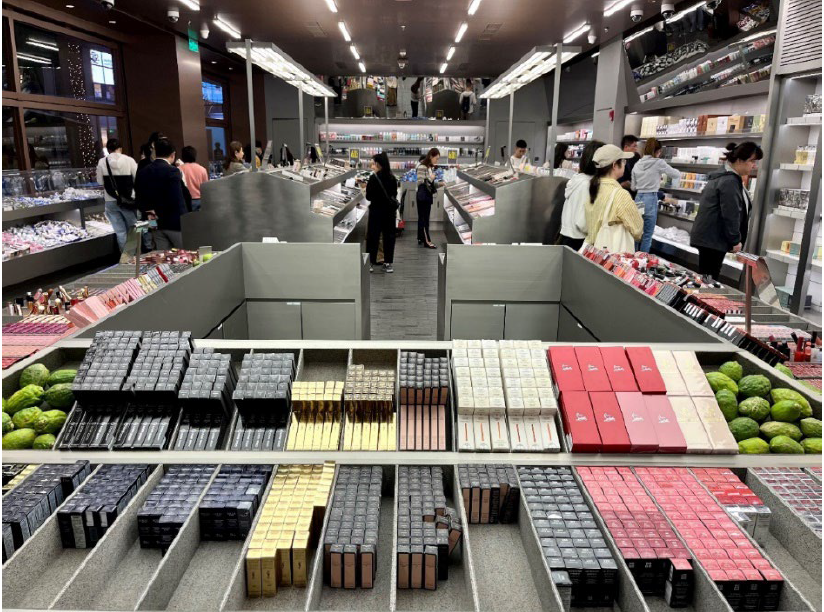
Source: author
Another consumption trend in China is the spending shift from material things to experiences—a pattern that is becoming increasingly prevalent with young families, who are willing to splurge on life-enriching experiences with their children.
High costs and toils of family raising in China
Raising children and managing a household in China is much more difficult than in Singapore, in my view. On the whole, children in China can only be sent to preschool at three years old and only for half a day, but the cost is twice as much as that of a Singapore’s preschool after currency conversion. The irony is that Singapore’s GDP per capita is more than six times that of China. Primary schools in China are no longer full days (like back in my day). Domestic helpers are very expensive to hire, costing as much as a middle to upper middle class mother’s full-time salary. Many young Chinese families have no choice but to enlist the help of the kids’ grandparents and send their children to enrichment classes, which double as childcare. The issues of high cost and inconvenience in raising families need to be solved in order for China to improve its birth rate, productivity, and long-term consumption growth, in my view.
Conclusion
Overall, we were very impressed with what we saw and experienced during our recent trip to China, which has progressed significantly in terms of technological advancement and the quality of goods and services (mainly F&B and auto/transportation). Rapid advancement and modernisation are prevalent not just in major cities but in a tier-three city like Yinchuan, which is developing amazingly fast.
However, life is seemingly tough for most people grappling with the high cost of living (especially those with young children) and the demanding work environment, which may not be very encouraging for long-term consumption growth. As an equity analyst covering Asia’s vibrant consumer sector, this eye-opening trip has given me invaluable on-the-ground insight into China, which is the largest consumer market in the region. The trip has given me another perspective and dimension when analysing Chinese consumer stocks, which I will be more watchful of in terms of bottom-up fundamentals and other market factors.
1Port city facing the Yellow Sea in China’s eastern Shandong Province
2The capital of China’s eastern Anhui Province
3The capital of China’s north central Ningxia Hui Autonomous Region at the edge of the Gobi Desert
Any reference to a particular security is purely for illustrative purpose only and does not constitute a recommendation to buy, sell or hold any security. Nor should it be relied upon as financial advice in any way.



